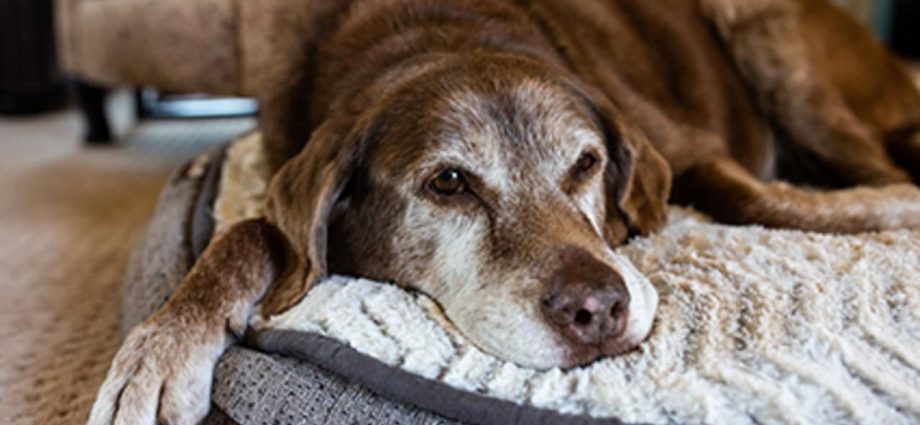MONDAY, May 1, 2023 (HealthDay News) — Like people, man’s best friend can get dementia with aging.
And these older dogs sleep less deeply when they develop the condition, just as people with Alzheimer’s disease do, according to research that included problem-solving tasks and brain wave measurements.
“Our study is the first to evaluate the association between cognitive impairment and sleep using polysomnography — the same technique as used in sleep studies in people — in aged dogs,” said senior study author Dr. Natasha Olby, a professor of veterinary neurology and neurosurgery at North Carolina State University.
The earliest symptoms of Alzheimer’s disease in people typically involve disruptions in sleep rhythms. This may be because of damage to sleep-regulating areas of the brain.
Alzheimer patients show the greatest reduction in slow-wave sleep (SWS), which is a stage of sleep without dreams and with slow “delta” brain waves. Daytime memories are consolidated during this phase.
These patients also spend less time in both REM (rapid eye movement) sleep, in which most dreaming occurs, and non-REM (NREM) sleep.
The scientists in this study found the same reduction in sleep time and delta brain waves in dogs with canine cognitive dysfunction syndrome (CCDS), or the dog equivalent of dementia.
In the study, published April 28 in the journal Frontiers in Veterinary Science, researchers evaluated 28 female and male senior mixed- and full-breed dogs between 10.4 and 16.2 years of age. This is about 81% and 106% of their average life span, depending on size.
Dog owners answered questions about their pets, including the rate the severity of symptoms of CCDS, such as disorientation, poor social interactions and house soiling.
The researchers also looked for orthopedic, neurological, biochemical and physiological conditions in the dogs.
Eight dogs were classified as normal. Another eight had mild CCDS. Four more had moderate CCDS, and eight had severe disease.
Researchers tested the attention, working memory and executive control of the dogs with a variety of tasks.
In the “detour task,” a dog needed to retrieve its treat from a horizontal transparent cylinder by accessing it from either end. Researchers then made the task more challenging by blocking the dog’s preferred side. They would need to show the cognitive flexibility to detour to the other end.
In a canine “sleep clinic” dogs were allowed to spontaneously nap in a quiet, dim space with white noise while the researchers did polysomnography studies.
Electrodes measured their brain waves, the electrical activity of the muscles and heart, and the dogs’ eye movements for up to two hours. About 93% of the dogs became drowsy, 86% entered NREM sleep and 54% entered REM sleep.
Dogs with higher dementia scores, and dogs who did worse on the detour task, took longer to fall asleep and spent less time sleeping, according to the researchers.
Those with lower memory scores had fewer slow oscillations in their electroencephalograms during REM sleep. This suggested less deep sleep.
“In people, slow brain oscillations are characteristic of SWS [short-wave sleep] and linked to the activity of the so-called glymphatic system, a transport system that removes protein waste products from the cerebrospinal fluid,” Olby explained in a journal news release. “The reduction in slow oscillations in people with Alzheimer’s, and the associated reduced removal of these toxins, has been implicated in their poorer memory consolidation during deep sleep.”
Dogs with poorer memory had more pronounced fast beta waves. These waves are typical of wakefulness in healthy people and dogs. This finding also indicated that dogs with CCDS sleep less deeply.
Dogs also who did more poorly at a task measuring attention span also had tighter coupling in delta waves between the two brain hemispheres, which is also seen in people with dementia.
The researchers cautioned that it’s still unknown if the nap changes would also be seen in dogs’ nighttime sleep.
“Our next step will be to follow dogs over time during their adult and senior years to determine if there are any early markers in their sleep-wakefulness patterns, or in the electrical activity of their brain during sleep, that could predict the future development of cognitive dysfunction,” Olby said.
More information
Texas A&M University has more on cognitive decline in aging dogs.
SOURCE: Frontiers in Veterinary Science, news release, April 28, 2023
Copyright © 2025 HealthDay. All rights reserved.

